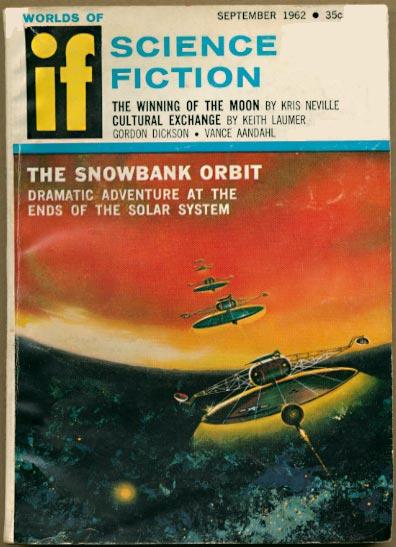Conventional propulsion, even using gas-core nuclear reactors to power a Dual-Stage 4-Grid ion drive, struggles to reach Planet 9 at 700 AU. What are the alternatives?
We can contemplate a fast flyby using either solar or electric sails that start from close to the Sun. The scientific return from such a flyby is debatable – New Horizons has returned a treasure trove of data from distant Pluto, but would take centuries to reach Planet 9 at “New Horizons” current speed of ~3 AU/year. Upping the speed to 30 AU/year means a much faster flyby. That might suffice, since Planet 9 is *much* bigger than Pluto.
What if we want to go into orbit? Many years ago Fritz Leiber wrote, in “The Snowbank Orbit”, of a rather desperate plan to slow down in the atmosphere of Uranus from a speed of 100 miles/second by solar-powered spacecraft with empty tanks. Leiber hand-waved the difficulty, with the ships experiencing a peak acceleration of almost 90 gee and hull temperatures over 900 K. The crew survived, barely, by use of some sort of force-field reinforcing in their spacesuit harnesses. The fastest re-entry ever endured by a probe was by “Galileo’s” descent probe, which entered the atmosphere of Jupiter at 48 km/s. But 30 AU/year is 143 km/s, which would sorely tax our ingenuity.
Of course until we know how big Planet 9 we can’t be too sure of how much atmosphere we have to work with. If Planet 9 is mostly hydrogen/helium around a small core, then it might have a very extended atmospheric envelope indeed. Many of the exoplanets seen in silhouette by the Kepler and K-2 missions have low masses and large radii, leading researchers to discuss the case for low-mass Gas Giants, rather than Ice Giants or Super Earths.
Mass-Radius Relationships for Very Low Mass Gaseous Planets
Such planets might have solid cores of a few Earth masses, but the majority of their mass in a puffy H2/He atmosphere. If the core masses 1 Earth mass and the envelope is 9 Earth masses, then it’s close to 8 Earth radii in size – for comparison, Jupiter’s average size (69,911 km) is only 11 Earth radii. Such a planet presents some interesting possibilities, which we’ll discuss in Part 3.

